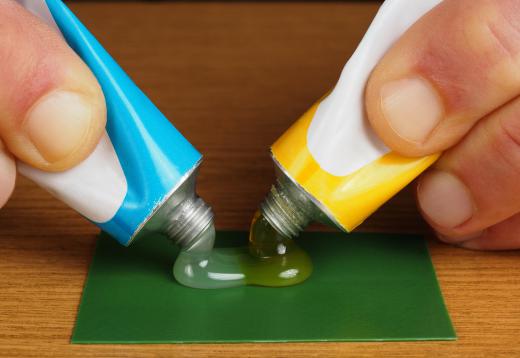An adhesive is a substance or material that can bond two items or surfaces together. Most adhesives have limitations, which mean that various types are needed to complete different types of projects. Example of adhesive products are glue, epoxy, and contact tape.
Glue is an adhesive product that is widely used. There are many types of glue and the variety is necessary because one type of glue is not usually sufficient for every task. For example, children commonly begin to use glue at a young age for craft and educational projects. It is not ideal, however, for them to use the same type of glue that is used to apply wallpaper.

The glue used to apply wallpaper is often toxic and would pose serious risks to young children. It can also be very resistant to cleaning, which means common childhood accidents would result in ruined clothes and furniture. Likewise, the glue that children use in school is not usually strong enough to serve the needs of a person hanging wallpaper.
Hot adhesives, sometimes called melt adhesives, also create bonds by changing forms. An adhesive product in this category is usually applied while it is at a high temperature that causes it to be in a liquid or semi-liquid state. The heating is achieved by a special glue gun. As the product cools it converts to plastic and a bond is created that holds two surfaces together. This type of adhesive product is commonly used for craft projects and manufacturing.
Contact tape is another commonly used adhesive product. Contact tape differs from other types of tape because it is sticky on both sides. This special property allows each side to attach to surfaces to act as a bond between them.

Contact adhesive is sometimes called contact cement. This type of adhesive product may contain flammable solvents, but there are also some water based varieties. Contact adhesives are commonly applied by rolling, but in some instances they are applied by spraying. This type of adhesive tends to be good for a task that requires a person to unite two non-porous materials.

Sometimes a person needs an adhesive product known as an epoxy. This type of adhesive product generally bonds and fills spaces. This is possible because an epoxy is in one form, such as a gel, when it is applied. As it dries, it changes forms to become a tight and secure solid. Epoxies are used for household and industrial tasks.
